Last Updated on September 28, 2023 by Amanda P. Brown
The world of fruits is an enchanting journey through diverse flavors, textures, and origins. Among this vibrant tapestry, Fruits that start with A stand as a testament to nature’s creativity.
Each fruit brings a unique taste and cultural significance, from the classic and beloved apple to the exotic and lesser-known varieties like ackee and akebia.
Originating from various corners of the world, these fruits have found their place in traditional cuisines, desserts, and holistic remedies, enriching culinary traditions and promoting well-being.
Exploring 25 exclusive A fruits, you’ll embark on a flavorful journey. Additionally, you will discover their origins, tastes, and traditional uses.
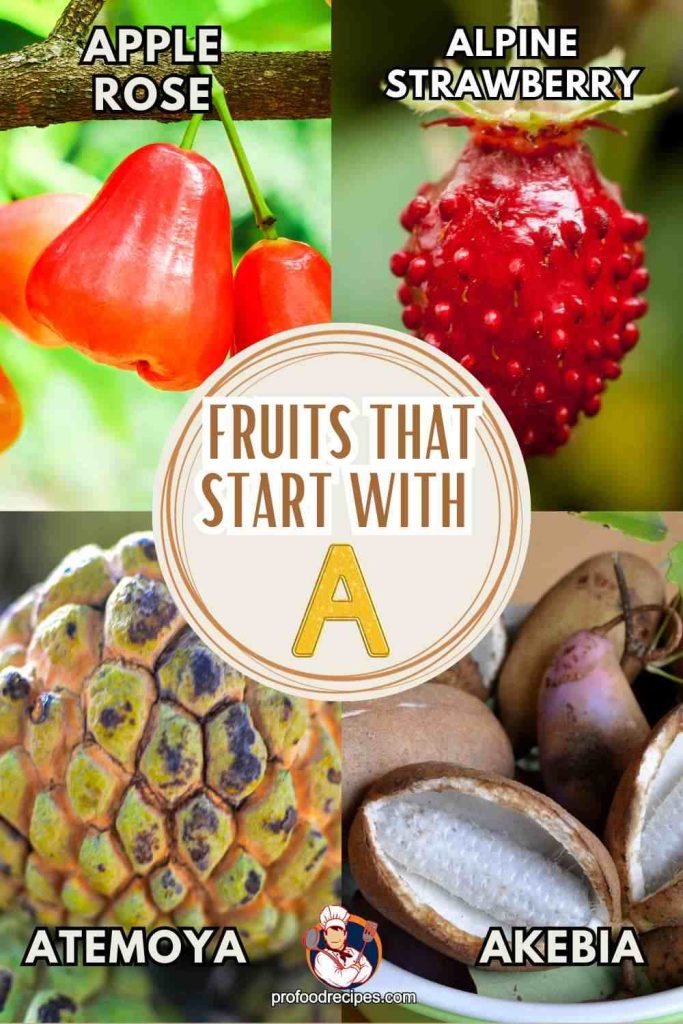
25 Brilliant Fruits That Start With A
Table of Contents
- Apple
- Apricot
- Avocado
- Acerola
- Amla Ackee
- Acai Palm
- Amara
- Akebia
- Alpine strawberry
- Apple rose
- Abiu
- Alligator pear
- African Star Apple
- Asian Pear
- Ambrosia Apples
- Arrayan
- Annatto
- Ambarella
- Apple Berry
- Argan
- Acerola cherries
- Ashwagandha
- Atemoya
- Annona
- Arava melon
1. Apple
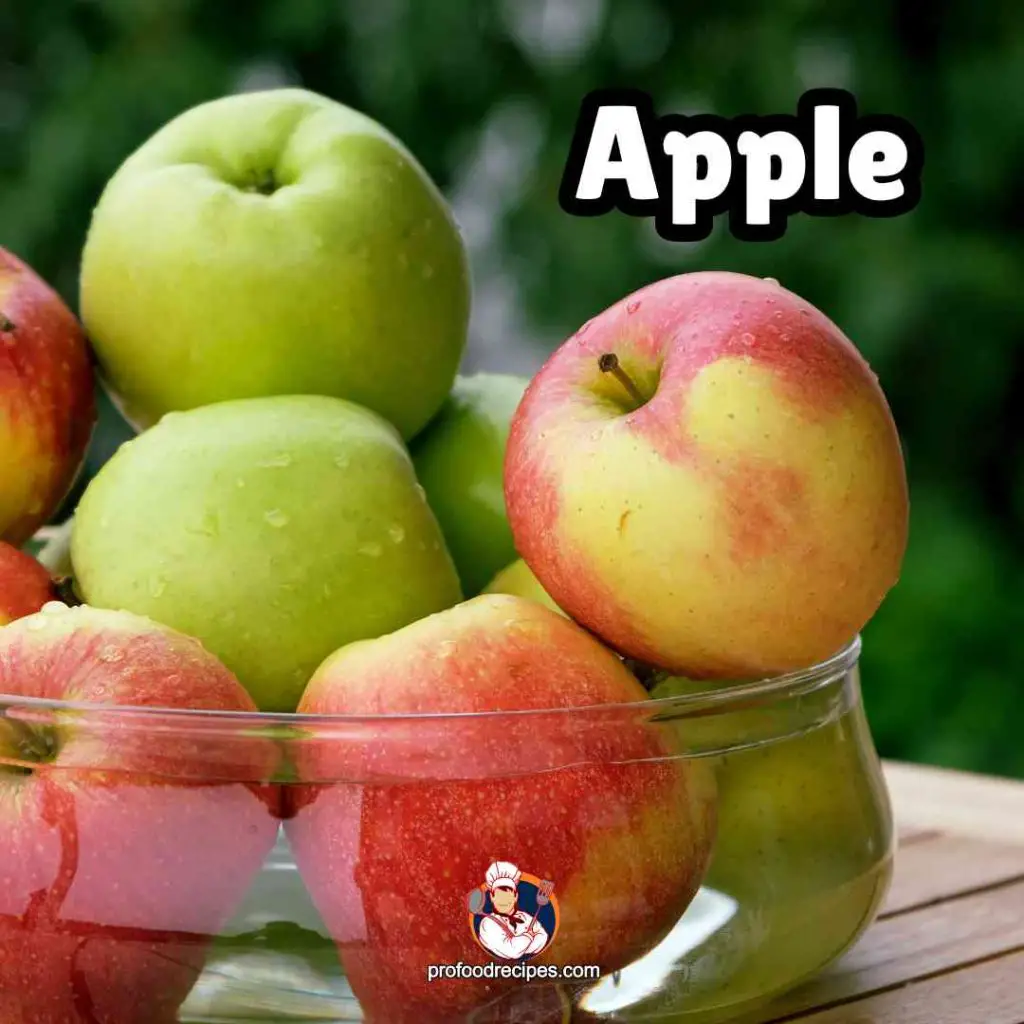
Apples originate from Central Asia and offer diverse flavors like sweet Fuji and tart Granny Smith. Their crisp texture and culinary versatility are ideal for pies and cider. These features make them autumn favorites. However, it’s best picked in late summer or early fall.
| Peak season | Fall, from September to November |
| Popular pairing | Peanut butter and cheddar cheese |
| Interesting Fact | Apples float in water due to their lower density, making them ideal for apple bobbing. |
| Health results | Stabilizes Blood Sugar and Lowers Cholesterol |
| Nutrition Facts (Per 1 medium apple/182 gm) | 95 alories and 14 % of DV vitamin C |
2. Apricot
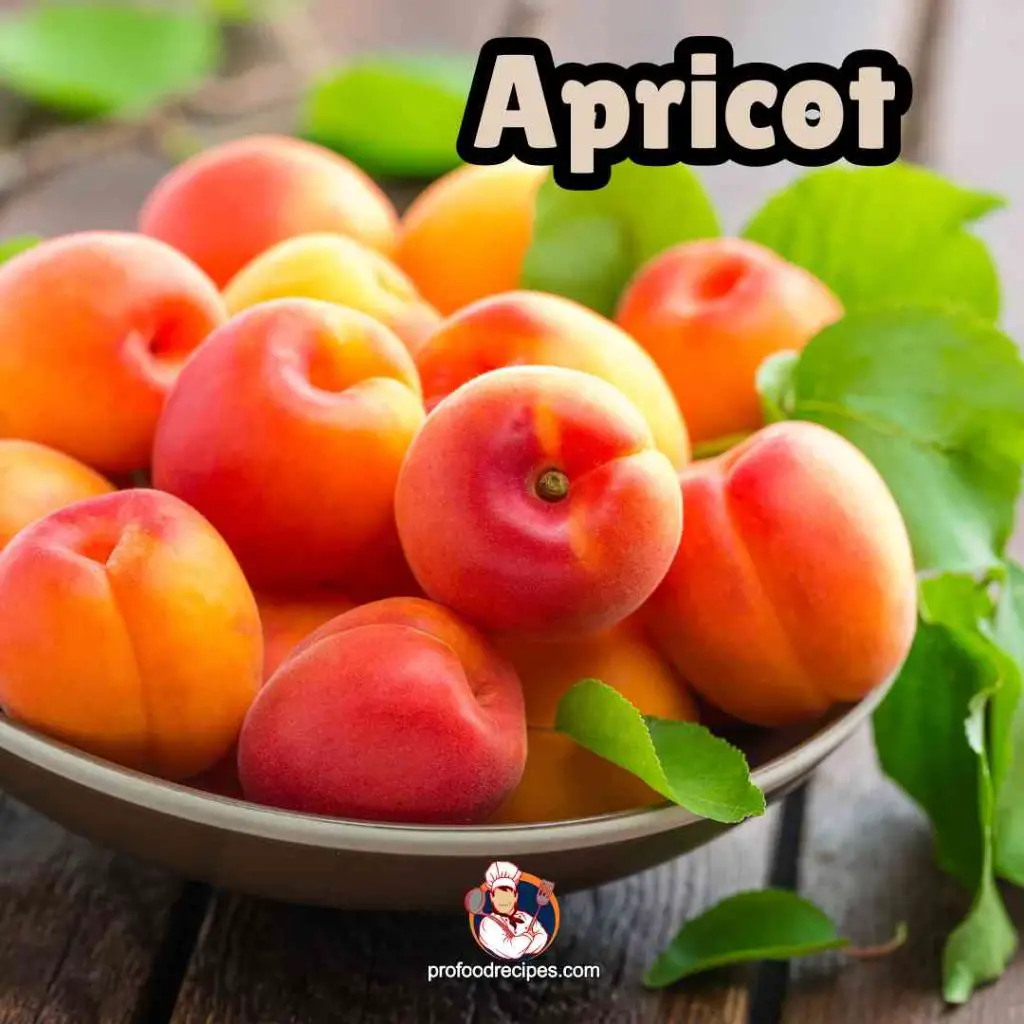
Apricots, native to China, deliver a sweet-tart flavor with velvety flesh. They’re cherished in preserves, Turkish delight, and Mediterranean cuisine. Harvest them at their best when ripe in early summer.
| Peak season | The last part of spring to the start of summer, usually between May and July. |
| Popular pairing | Apricots salad with almonds |
| Interesting Fact | Apricots belong to the roses family and are linked to almonds. |
| Health results | High in Antioxidants and promotes heart health |
| Nutrition Facts (Per 1cup/155gm) | 74 alories and 60 % of DV vitamin A |
3. Avocado
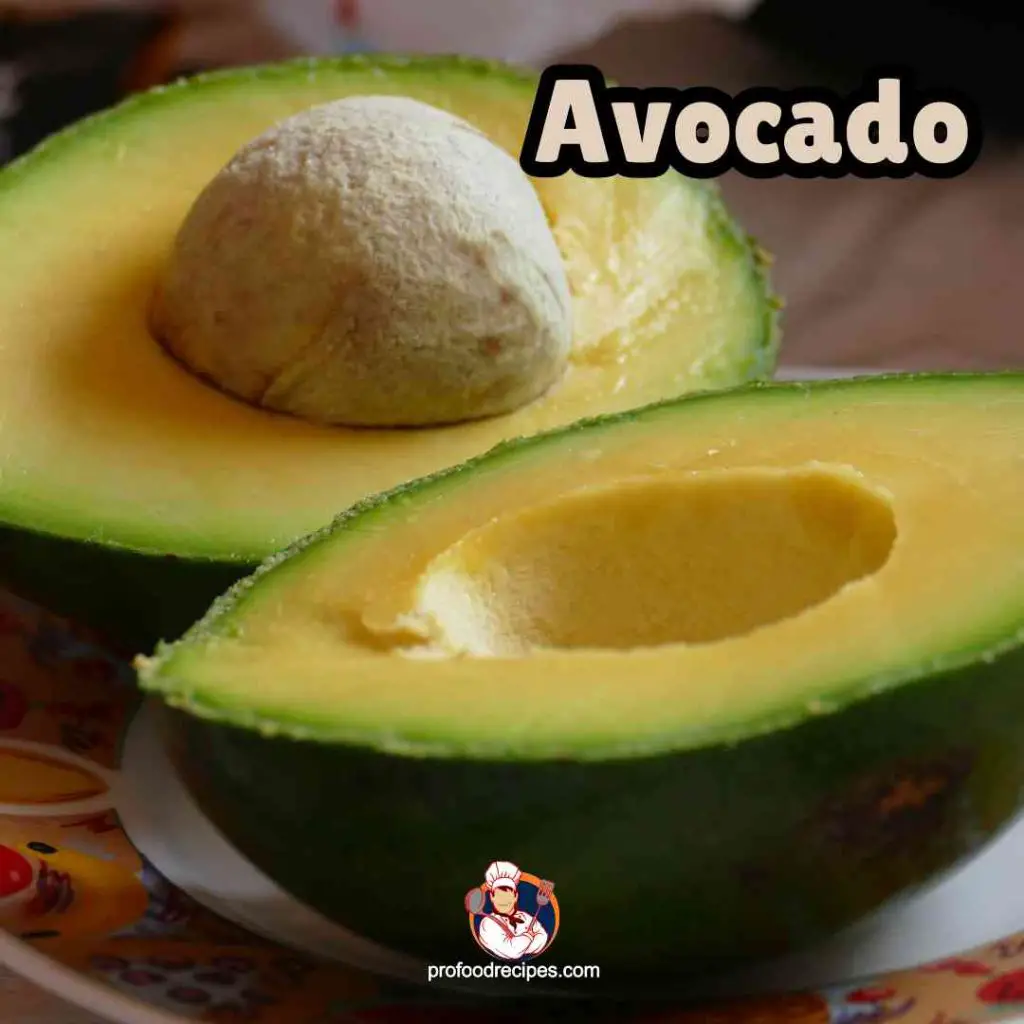
Avocado, originating in Central America, features a creamy texture and mild, nutty flavor. It’s a culinary essential. Avocados are commonly found in guacamole, salads, and on toast. However, it is typically ripe in late spring to early summer.
| Peak season | The months of spring and summer |
| Popular pairing | Avocado salad with tomatoes and onions |
| Interesting Fact | Avocados are technically berries, and they are related to cinnamon and bay laurel. |
| Health results | Healthy for the heart and great for vision |
| Nutrition Facts (per 1 medium-sized avocado/150 grams) | 240 calories and good source of vitamin C and k |
4. Acerola
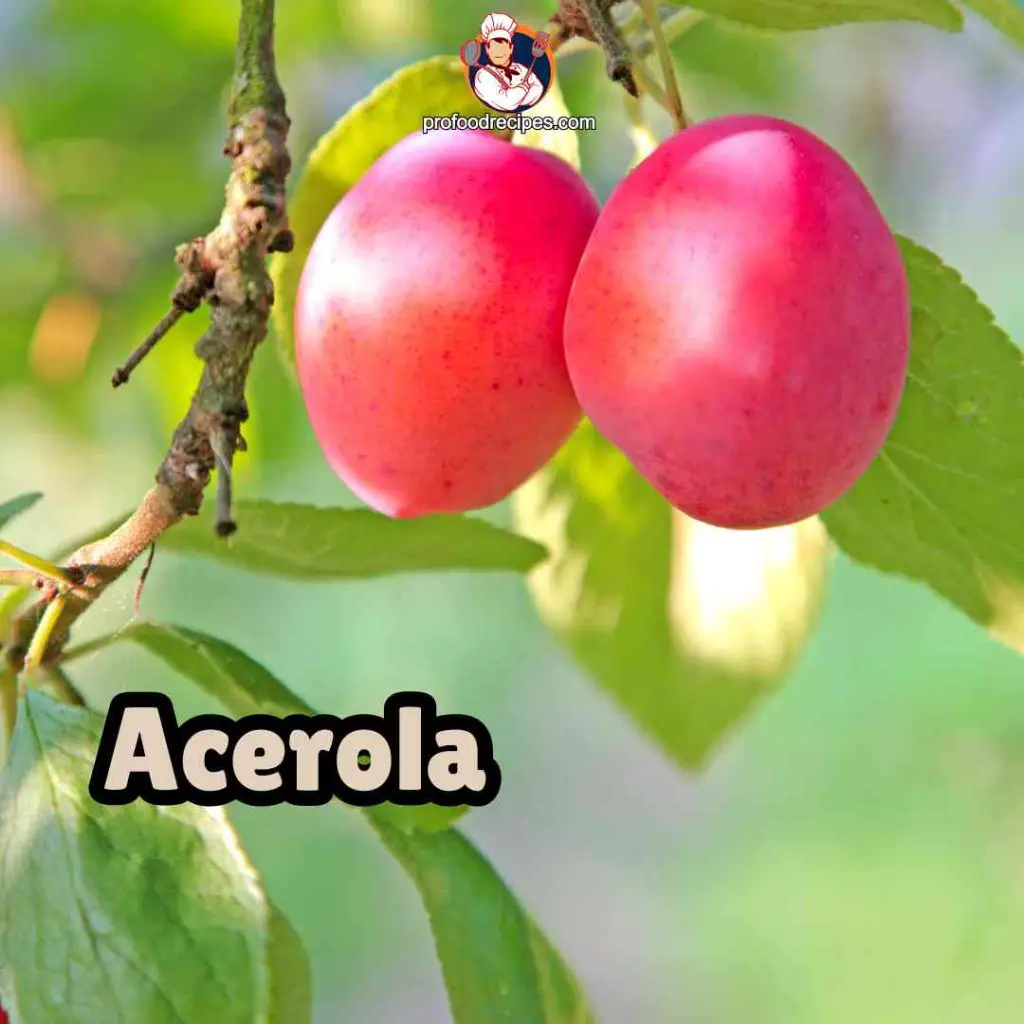
Acerola, originating from the West Indies, boasts a tart-sweet taste. This cherry-like fruit is renowned for its high vitamin C content. It finds use in juices, jams, and supplements. It’s best when fully ripe.
| Peak season | The end of spring and the start of summer. |
| Popular pairing | Acerola cherry drinks with mango or pineapple |
| Interesting Fact | They are sometimes called Barbados cherries because of their strong association with the Caribbean island of Barbados. |
| Health results | Prevent scurvy primly |
| Nutrition Facts | 32 calories and good amount of vitamin C |
5. Amla
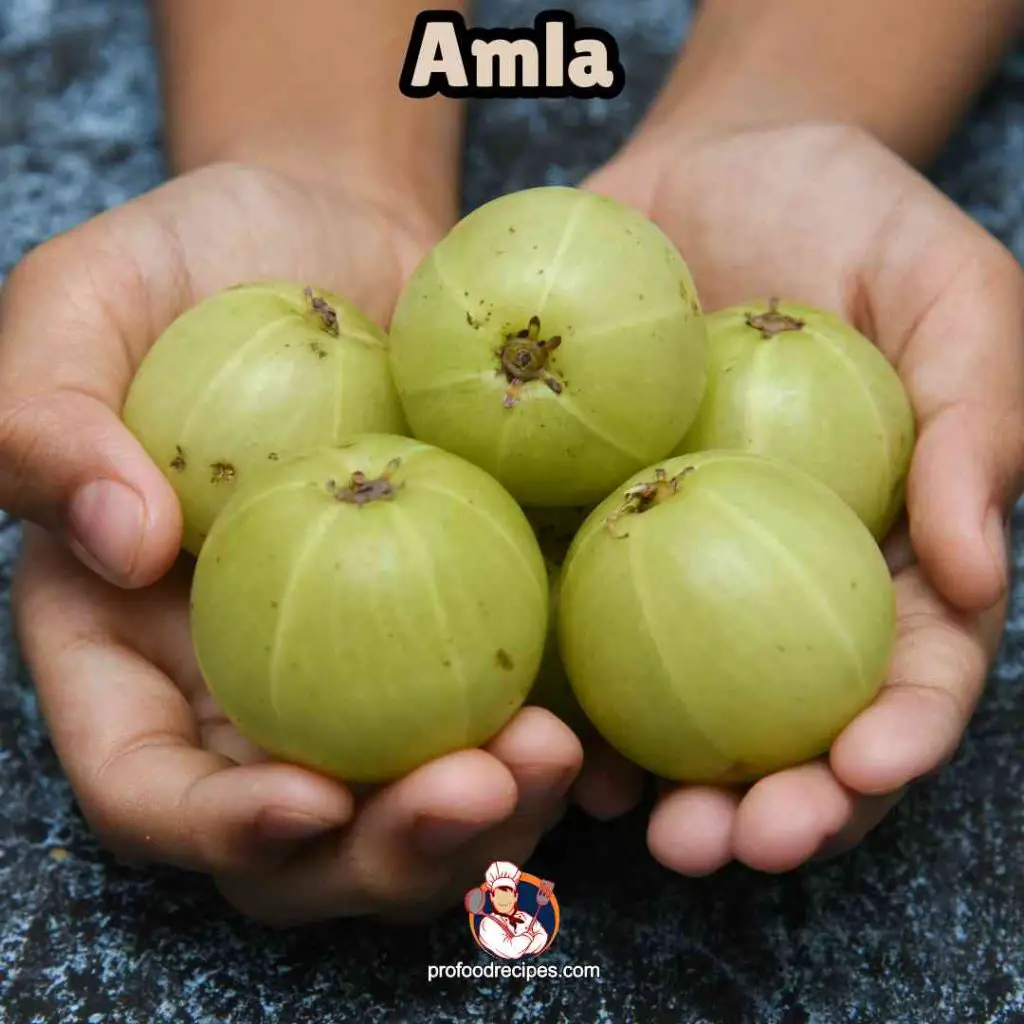
This Indian fruit, Amla, is sour and tangy. It’s a rich source of vitamin C and is used in chutneys, jams, and traditional Ayurvedic remedies for its health benefits.
| Peak season | Late summer and early fall months |
| Popular pairing | With honey or used in chutneys |
| Interesting Fact | Known as Indian gooseberry and a most used ingredient for traditional Ayurveda treatment. |
| Health results | May enhance liver, kidney, and heart health, boost the immune system, stimulate hair growth, and improve digestion. |
| Nutrition Facts (Per 100gm) | 44 calories and 500 mg vitamin c |
6. Ackee

Ackee has a mild, nutty taste and a tender, grainy texture. However, these fruit’s roots can be traced back to its West African birthplace. It’s a staple in Caribbean cuisine, often paired with salt fish. It is best to harvest when fully ripe, usually in late summer.
| Peak season | Late spring and early summer |
| Popular pairing | Paired with saltfish (salted cod) in a traditional Jamaican dish known as “Ackee and Saltfish. |
| Interesting Fact | Sometimes referred to as the vegetable brain due to its unique appearance |
| Health results | Promote Digestive Health and Stabilize Blood Sugar |
| Nutrition Facts (Per 100gm) | 151 calories and 35 milligrams of vitamin C |
7. Acai Palm
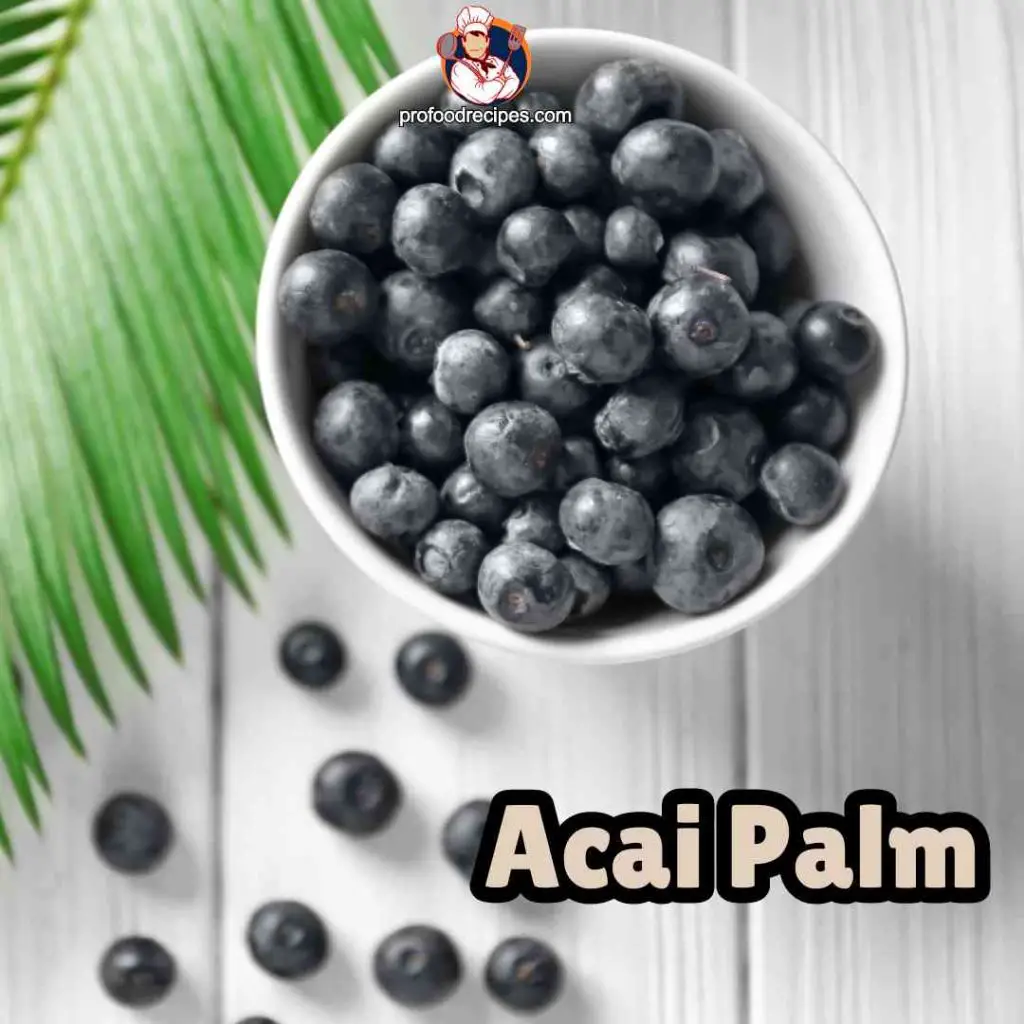
The Acai Palm fruit has its beginnings in West African soil. They are valued for their deep, earthy flavor. Moreover, they embrace a creamy texture, which is much like apricots. You can find their use in diverse culinary creations.
| Peak season | Year-round in Amazon |
| Popular pairing | Paired with banana and other fruits in smoothie bowls |
| Interesting Fact | Are considered a superfood due to their high antioxidant content. |
| Health results | Enhance heart health, memory, and cancer protection. |
| Nutrition Facts (Per 100 gm) | 70-80 calories and 30-50 milligrams of vitamin C |
8. Amara
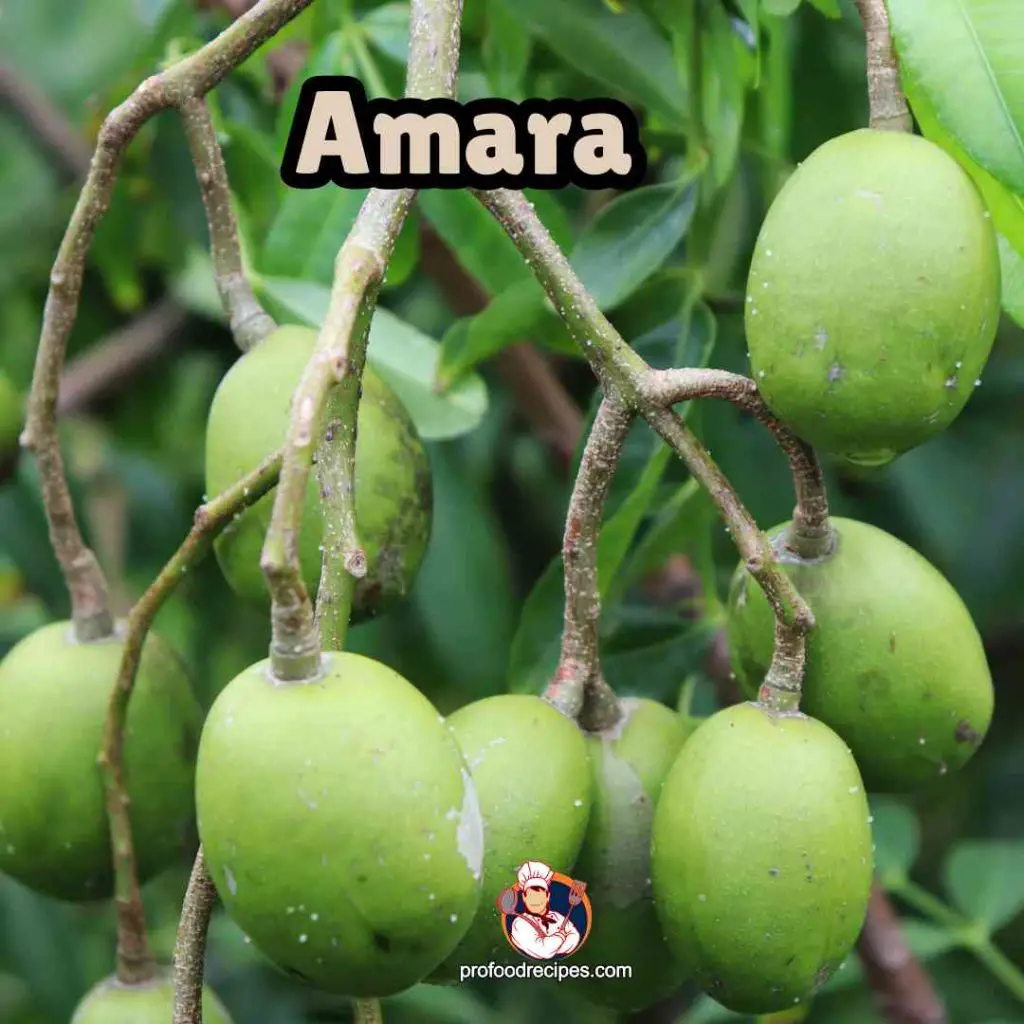
Amara is an American tropical fruit. They have a tangy-sweet flavor and a hard, crisp texture. It finds use in culinary creations like apricots, often featuring in jams and desserts.
| Peak season | The end of spring and the beginning of summer |
| Popular pairing | In jams, sweets, and baked items, it is combined with other fruits. |
| Interesting Fact | Amara is a tropical fruit native to the Americas and is valued for its tangy-sweet taste and firm, crisp texture. |
| Health results | When it’s part of a well-balanced diet, it can improve general well-being. |
| Nutrition Facts (Per 100 gm) | 60-80 calories and 30 mg vitamin c. |
9. Akebia
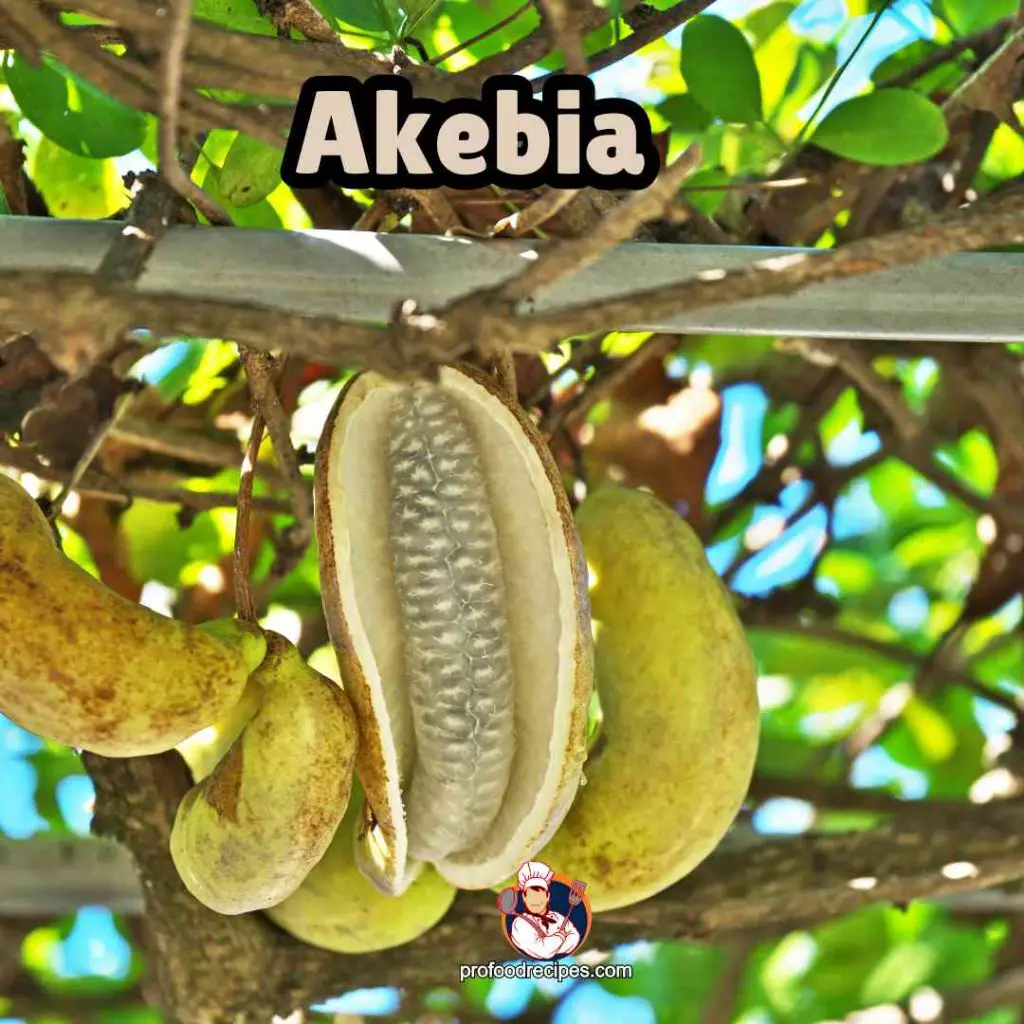
Akebia, a fruit from East Asia, offers a unique sweet and mildly tart flavor. This fruit comes with a jelly-like texture. It is less common and primarily used in traditional Asian dishes.
| Peak season | Late spring and start of summer |
| Popular pairing | Pair well with other fruits and ingredients like yogurt. |
| Interesting Fact | Akebia fruits come from a unique-looking, woody vine known as the “chocolate vine” due to the purplish-brown color of its flowers. |
| Health results | Primly assist to Weight Loss |
| Nutrition Facts (Per 100 gm) | 34 calories and 10-20 mg Vitamin C |
10. Alpine Strawberry
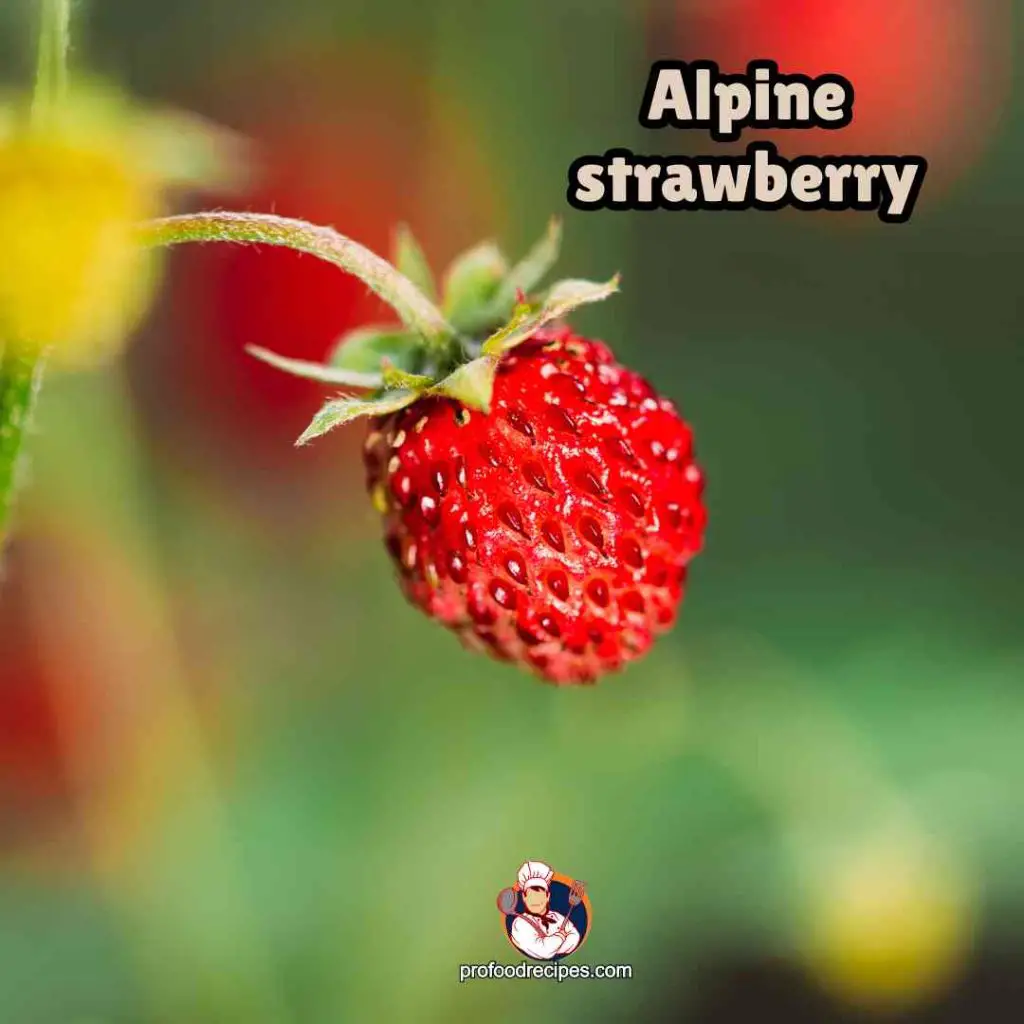
Alpine strawberries are smaller than their traditional counterparts. They offer a sweet and tangy flavor. Their delicate texture resembles apricots, commonly used in jams, desserts, and fresh fruit applications.
| Peak season | Late spring and early summer months. |
| Popular pairing | Paired with chocolate or used as a topping for desserts like ice cream and yogurt |
| Interesting Fact | Alpine strawberries are known for their intense aroma, which is often compared to the scent of roses. |
| Health results | Improves Brain Functioning, Blood Pressure, hair growth rapidly and reduces dandruff |
| Nutrition Facts (Per 100 gm) | 32 calories and 87 mg vitamin C |
Read More:
11. Apple Rose
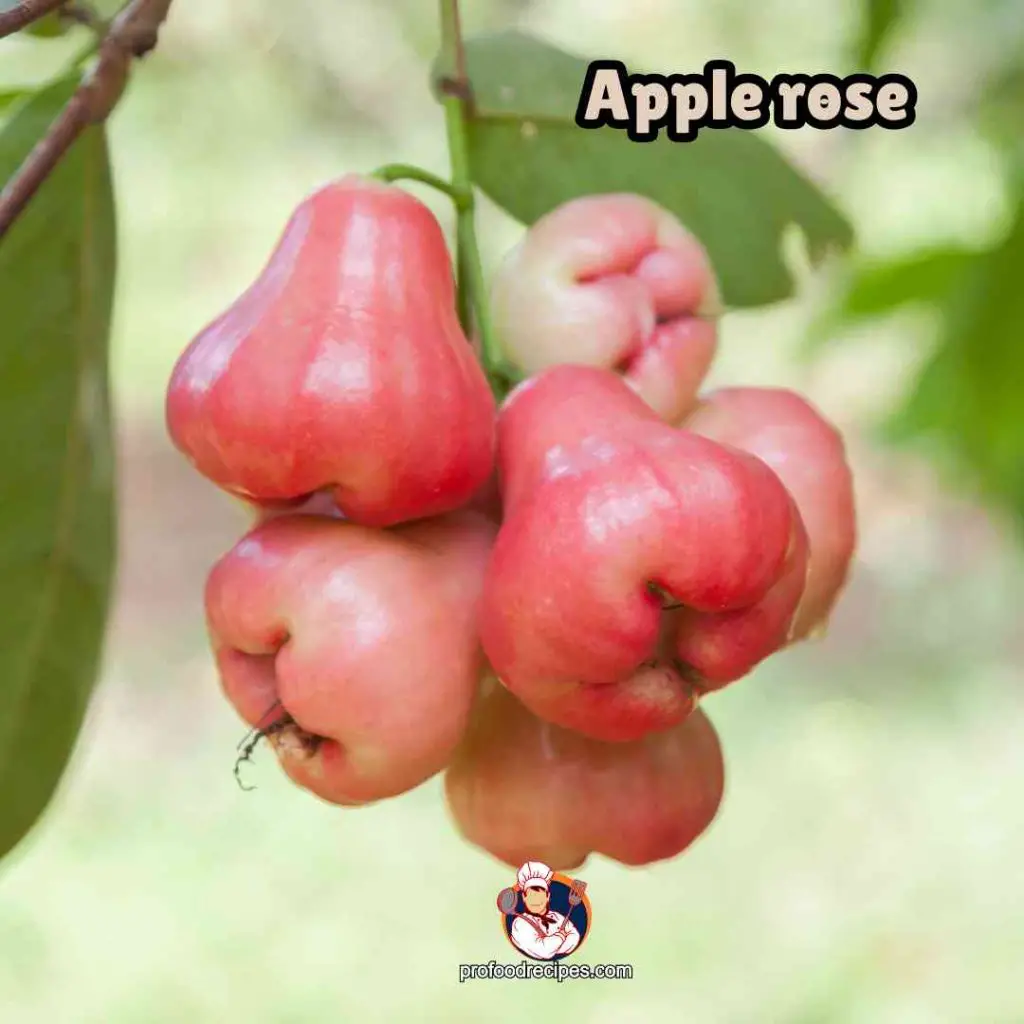
Apple roses are renowned for their sweet apple flavor. They boast a flaky and delicate texture. Additionally, they’re a visually appealing dessert. These treats resemble blooming roses and are commonly found in traditional culinary creations.
| Peak season | They are available all year, but they are favored in the fall. |
| Popular pairing | Paired with cinnamon and served with vanilla ice cream or custard |
| Interesting Fact | Resembling delicate rose petals make them a favorite choice for elegant desserts. |
| Health results | Reduce your risk of heart attacks, high blood pressure, and major strokes. |
| Nutrition Facts (Per 100g, raw) | 25 calories and 5.7 g carbohydrate |
12. Abiu
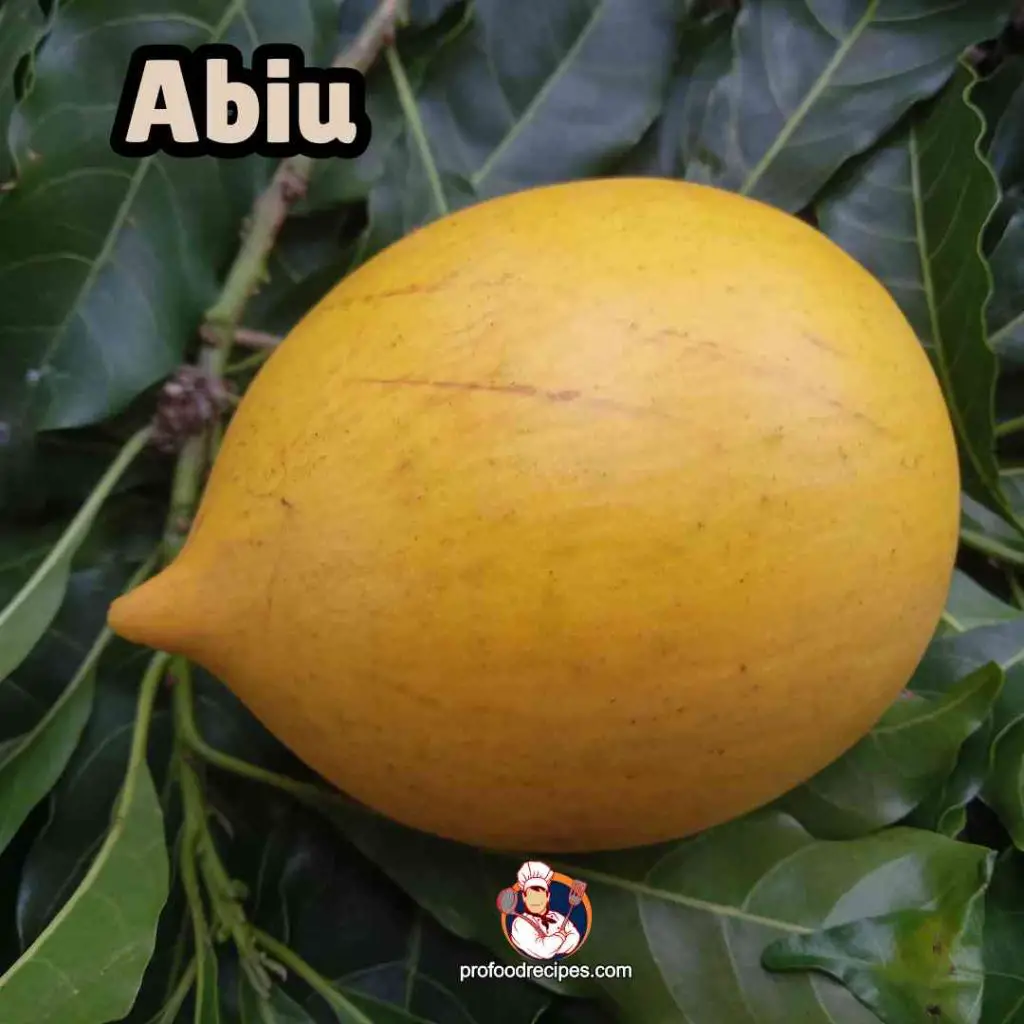
Abiu hails from South America. It tastes sweet and custard-like. The texture is also creamy and silky. These features make it ideal for desserts. Abiu is celebrated for its unique flavor.
| Peak season | Late summer and early fall months. |
| Popular pairing | Used in fruit salads or paired with other tropical fruits. |
| Interesting Fact | Sometimes referred to as the caviar of fruit because of its texture and look. |
| Health results | Increasing immunity reduces the risk of hypertension, heart attacks, and major strokes. |
| Nutrition Facts (Per 100 gm) | 140 calories and 130 mg vitamin A |
13. African Star Apple
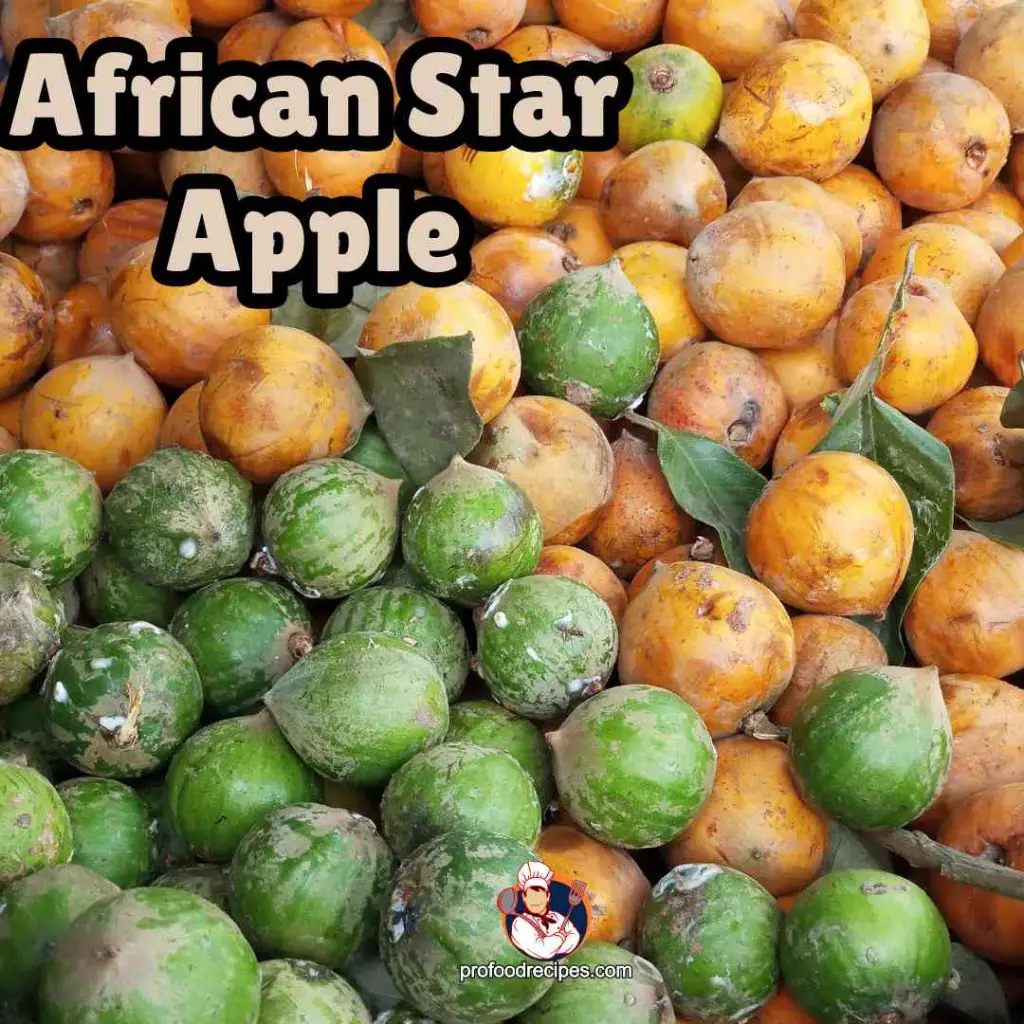
African Star Apple comes from West Africa and has a sweet, tangy flavor and slightly grainy texture. People in West Africa use it in their traditional dishes.
| Peak season | Late rainy season and early dry season |
| Popular pairing | Paired with groundnuts (peanuts) for a classic and tasty combination. |
| Interesting Fact | Known as “Agbalumo” or “Udara,” is known for its unique star-like shape on the inside when sliced open. |
| Health results | Improve heart health by lowering bad cholesterol levels |
| Nutrition Facts (Per 100 gm) | 67 calories and 25 mg Vitamin C |
14. Asian Pear
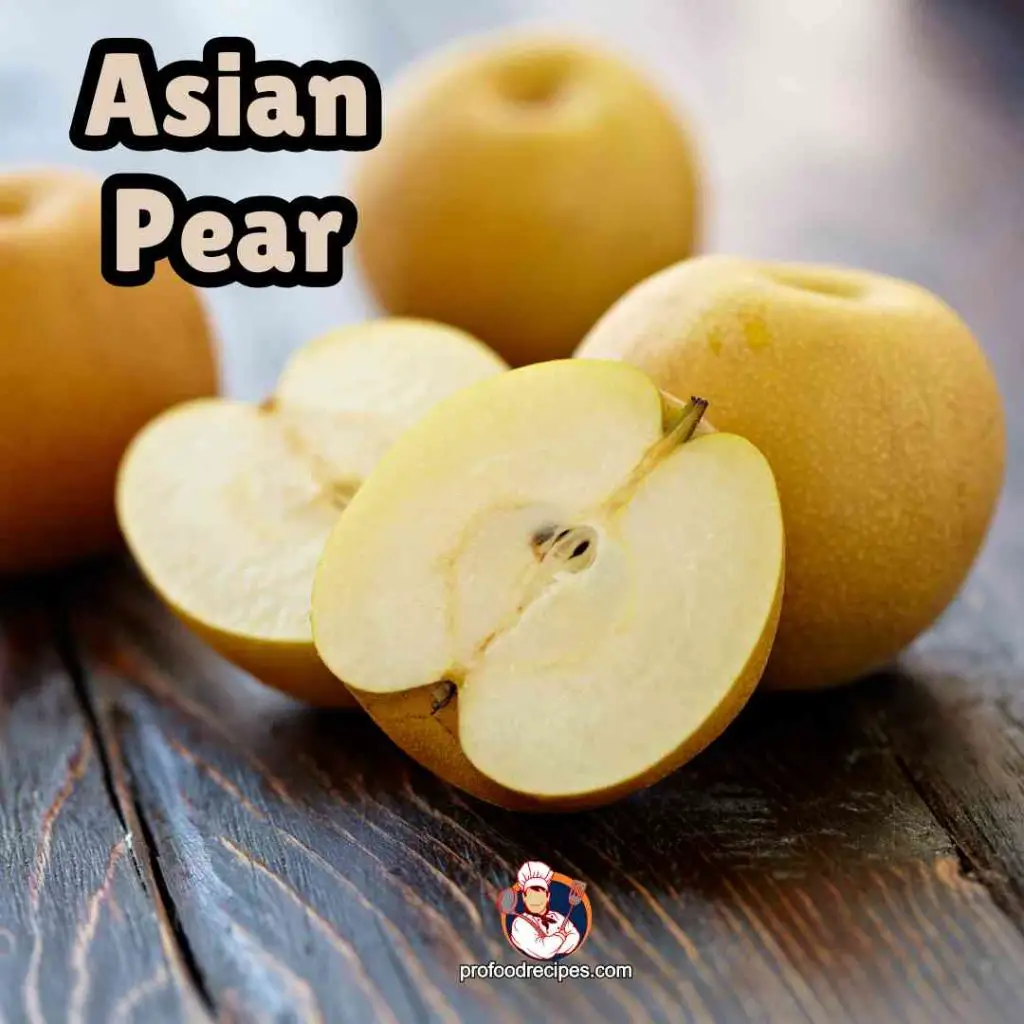
The Asian pear comes from East Asia. They are known for being crisp and juicy fruit. It also has a sweet and slightly floral taste. However, this versatile fruit is appropriate for both fresh and cooked consumption. Its best harvest time usually falls in late summer, ensuring peak flavor and quality.
| Peak season | The late summer and fall months |
| Popular pairing | Paired with cheeses such as Gouda or served in salads |
| Interesting Fact | Due to their apple-like form and pear-like texture and flavor, they are known as apple pears. |
| Health results | Boost your health by enhancing bone, blood, and heart well-being. |
| Nutrition Facts (Per 122 gm) | 51 calories and 9% vitamin C of DV |
15. Ambrosia Apples
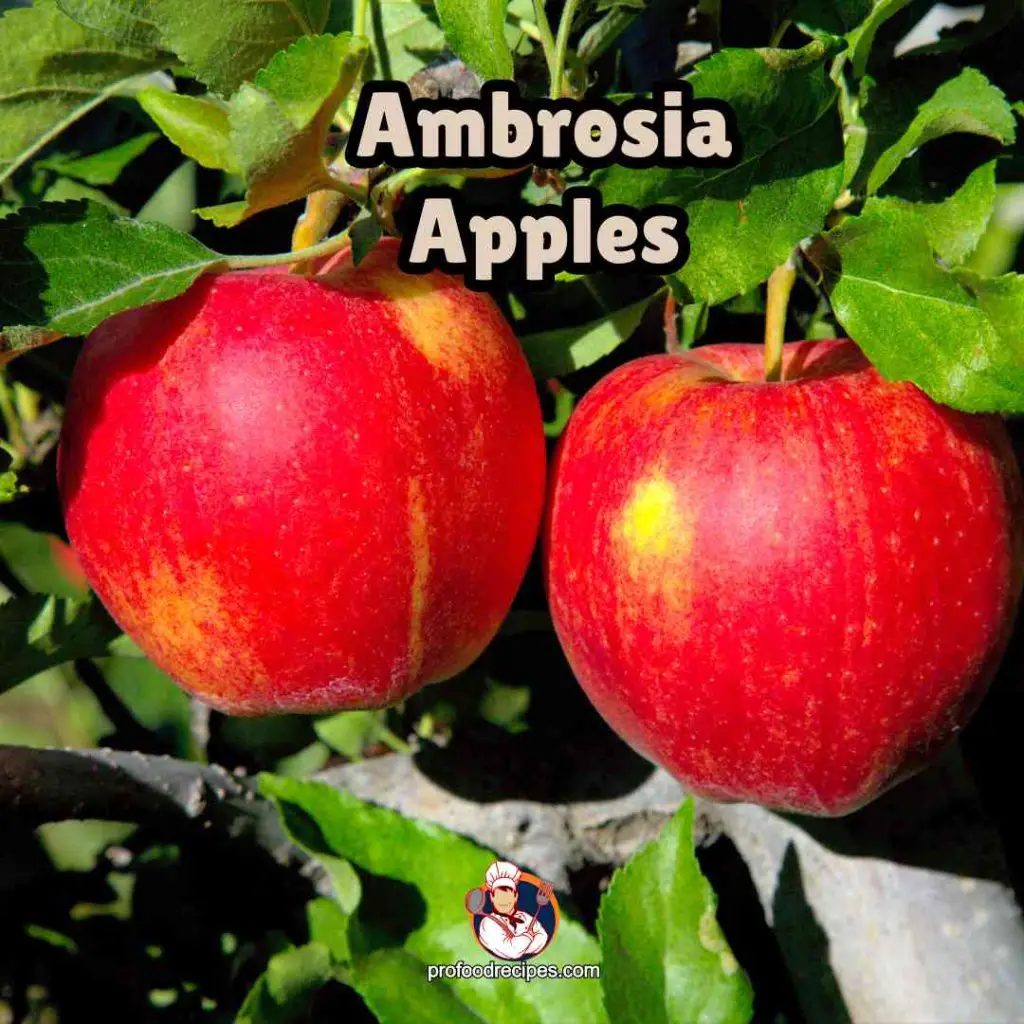
Ambrosia apples originated in British Columbia, Canada. This fruit embraces a sweet, honey-like taste. Additionally, they have a crisp, juicy texture. These apples are enjoyed fresh and in various culinary creations.
| Peak seaso | The late summer and fall months |
| Popular pairing | Pair wonderfully with a variety of cheeses, particularly sharp cheddar, and are also a great addition to fruit salads. |
| Interesting Fact | Prized for their resistance to browning when sliced |
| Health results | Support a healthy body weight |
| Nutrition Facts (Per 182 gm) | 109 calories and 14% vitamin C of DV |
16. Arrayan
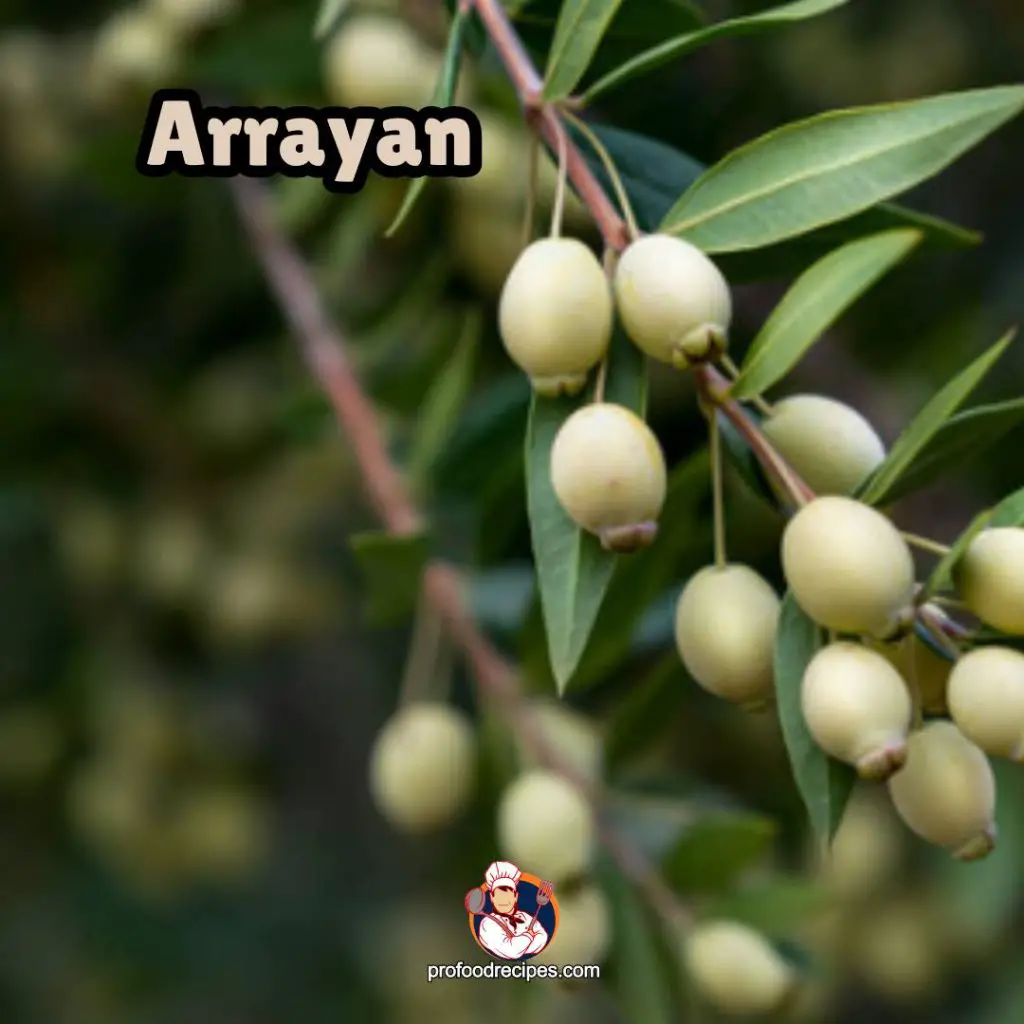
Arrayan is a fruit that comes from South America. It tastes sweet and somewhat sour. So, when you eat it, it feels firm and grainy. South American people often use it in their traditional dishes and drinks.
| Peak season | months of summer’s end and early fall |
| Popular pairing | Paired with cheese or used in fruit salads |
| Interesting Fact | Also known as Chilean guava |
| Health results | Protects blood arteries from damage caused by high glucose levels. |
| Nutrition Facts (Per 100gm) | 42 calories and 24 mg vitamin C |
17. Annatto
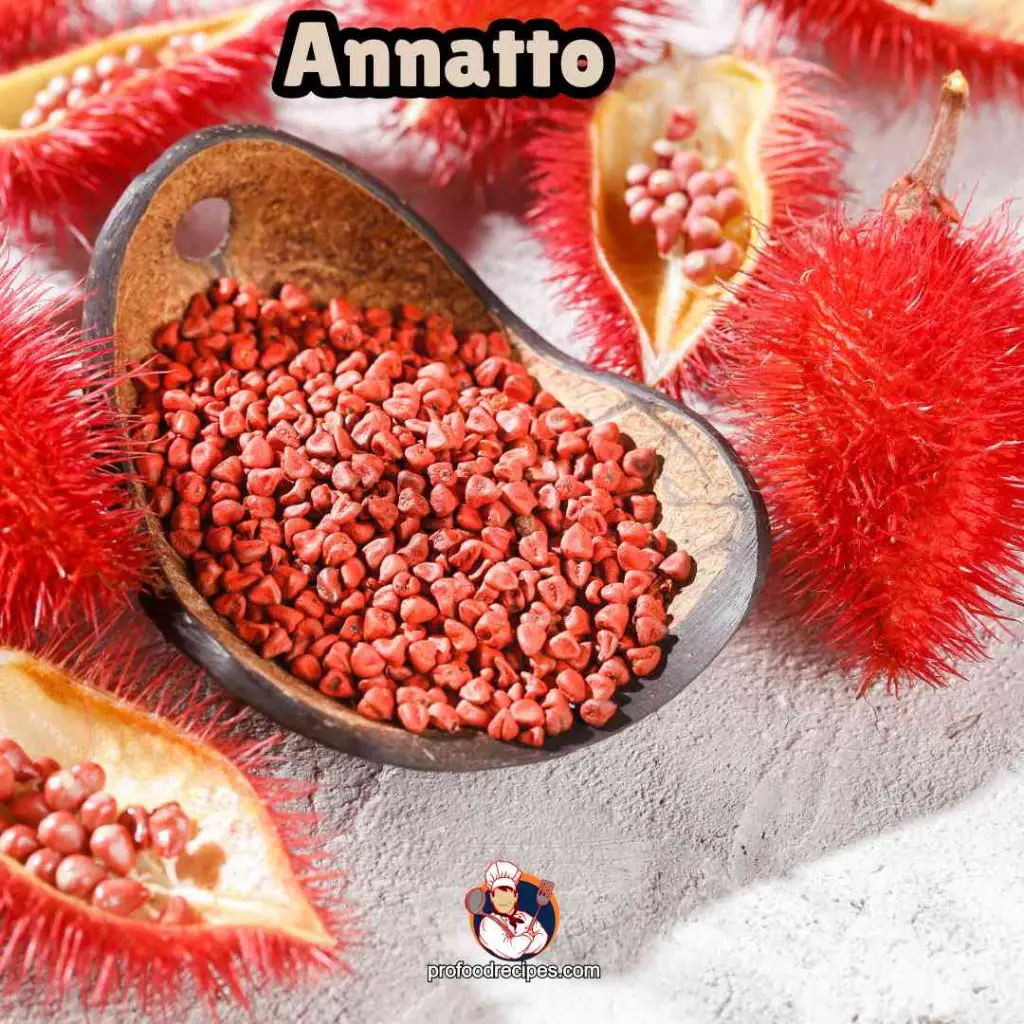
Annatto comes from Central and South America. It comprises a mild, slightly nutty taste. Moreover, its texture seems powdery and crumbly. People often use it as a natural food coloring.
| Peak season | Late summer and fall months |
| Popular pairing | Widely used in Latin American and Caribbean cuisines to infuse oils with their vibrant color and mild flavor. |
| Interesting Fact | Annatto seeds, often called “the lipstick tree,” have a centuries-old history of being used as a natural dye for red body paint and lipstick. |
| Health results | Better heart health, healthy eyes, and reduced inflammation. |
| Nutrition Facts (100 gm seeds) | 500 calories and 100 mg carbohydrate |
18. Ambarella
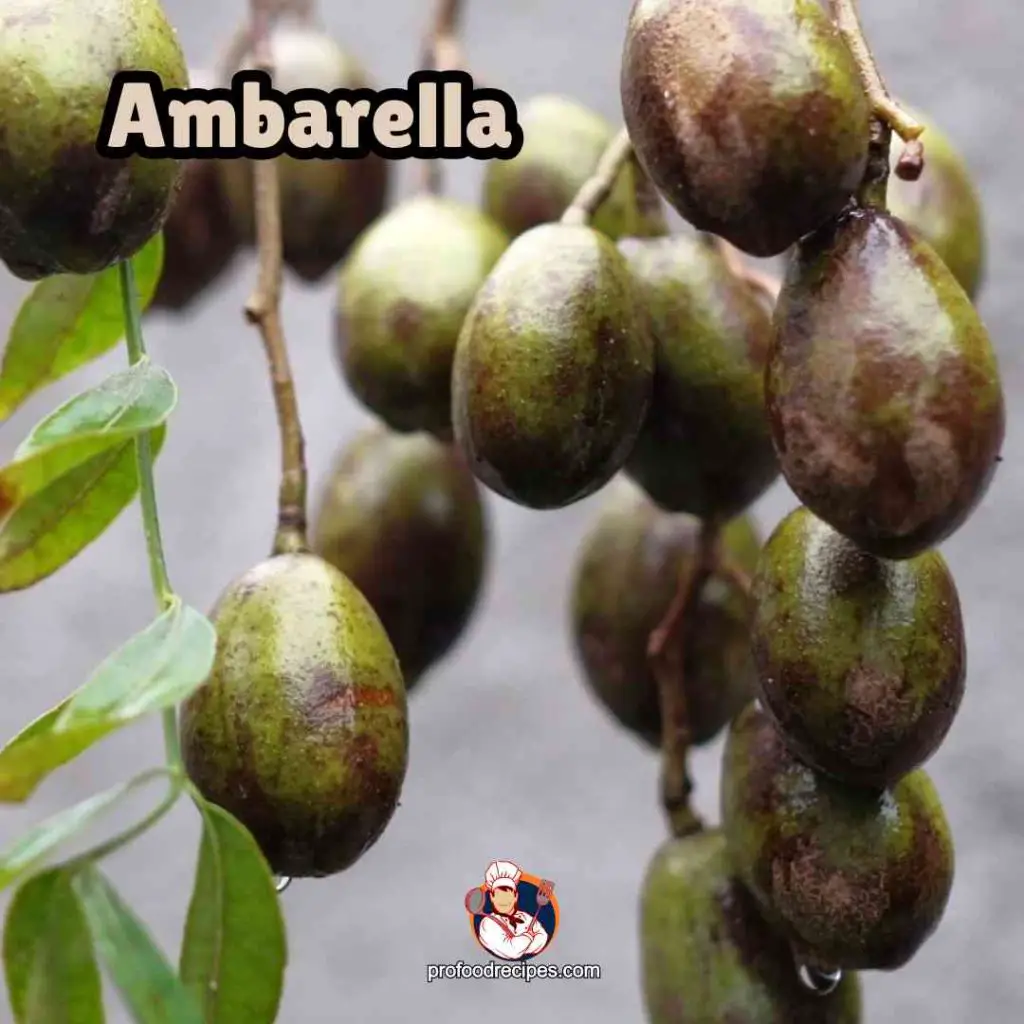
Ambarella is originally from Southeast Asia. It has a sweet and tangy taste and feels juicy and firm. People often use it in chutneys and preserves.
| Peak season | Summer months |
| Popular pairing | Often paired with salt and chili in various Southeast Asian dishes |
| Interesting Fact | Sometimes called as June plum |
| Health results | Enhanced heart and digestive health, supports eye and skin well-being |
| Nutrition Facts (Per 100 gm) | 27 calories and 20 mg vitamin C |
19. Apple Berry
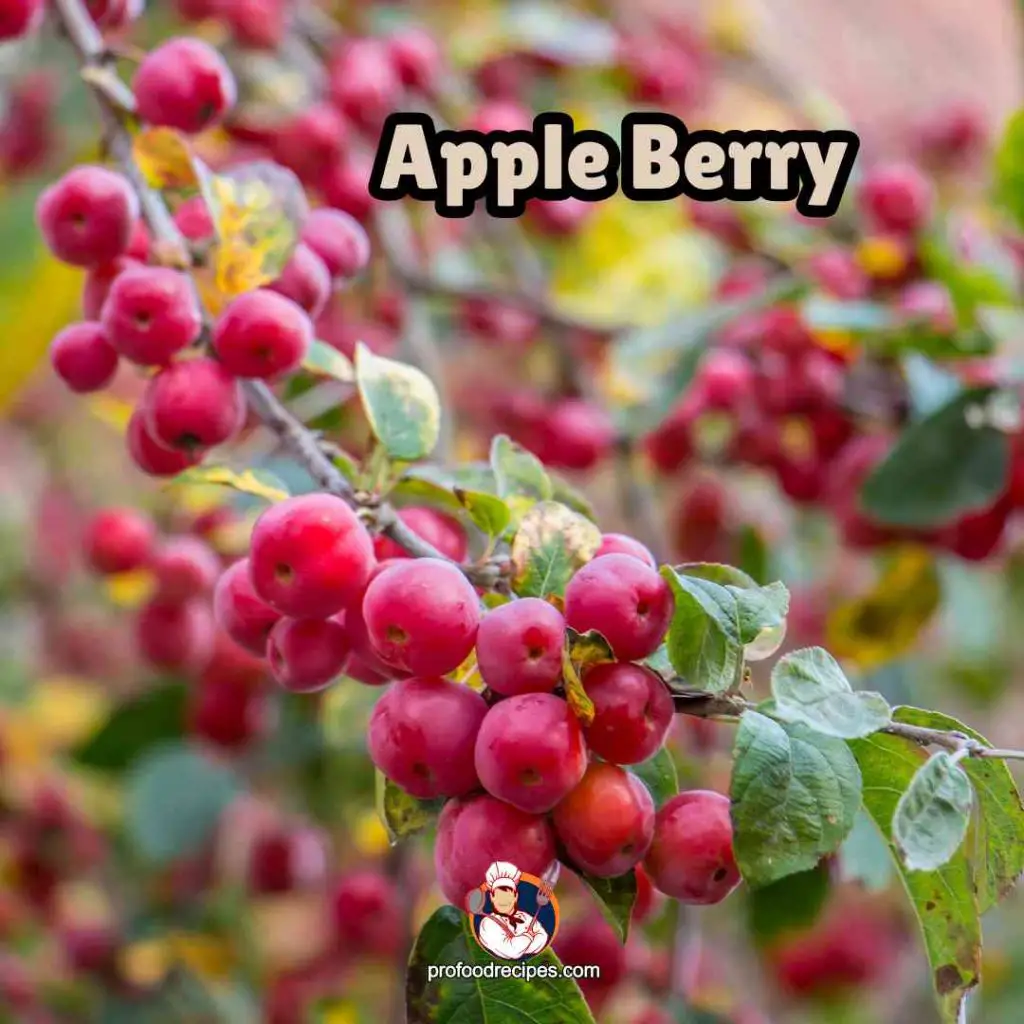
Apple Berry comes from South America. It embraces a sweet and slightly tart taste. And the fruit has a crisp and juicy feel. You can often use it in making jams and desserts. It tastes like apples and looks like berries.
| Peak season | Late summer and early fall months |
| Popular pairing | Paired with yogurt or used in smoothies |
| Interesting Fact | Also known as Indian hog plums |
| Health results | Assist in the maintenance of your sleep, immunity, and cognitive function. |
| Nutrition Facts (Per 145 gm) | 44 calories and 11 mg vitamin C |
20. Argan
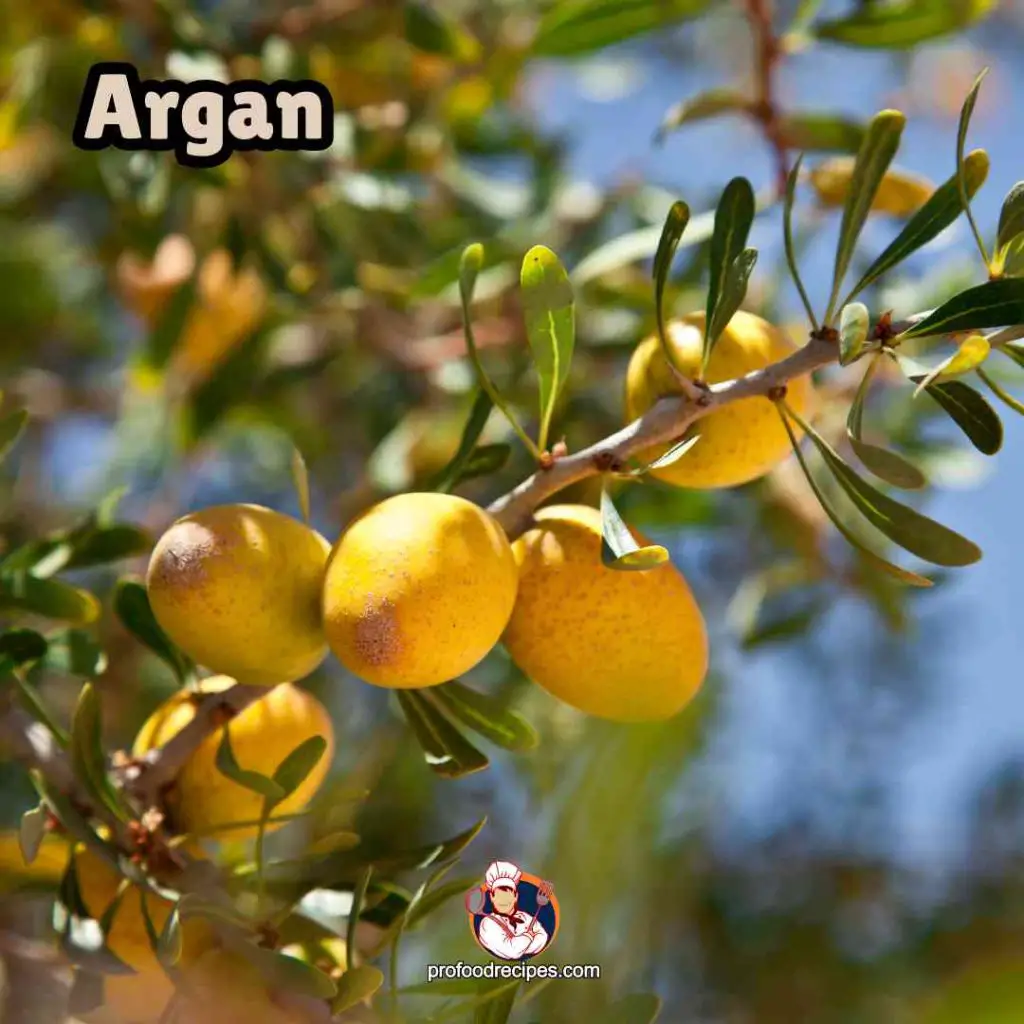
One of the common Morocco fruits that begin with A is Argan. It tastes a bit nutty, like almonds. People there use it for making oil and cooking. It’s also used in cosmetics because it benefits the skin and hair.
| Peak season | Summer months, from June through August |
| Popular pairing | Paired with salads, couscous, and grilled meats in Moroccan cuisine |
| Interesting Fact | Often referred to as the “Tree of Life” because they play a vital role in the ecosystem |
| Health results | Promote hearth health and reduce skin aging signs |
| Nutrition Facts (Per 1 tbs. Argan oil) | 72 calories and 8 gm fat |
21. Acerola Cherries
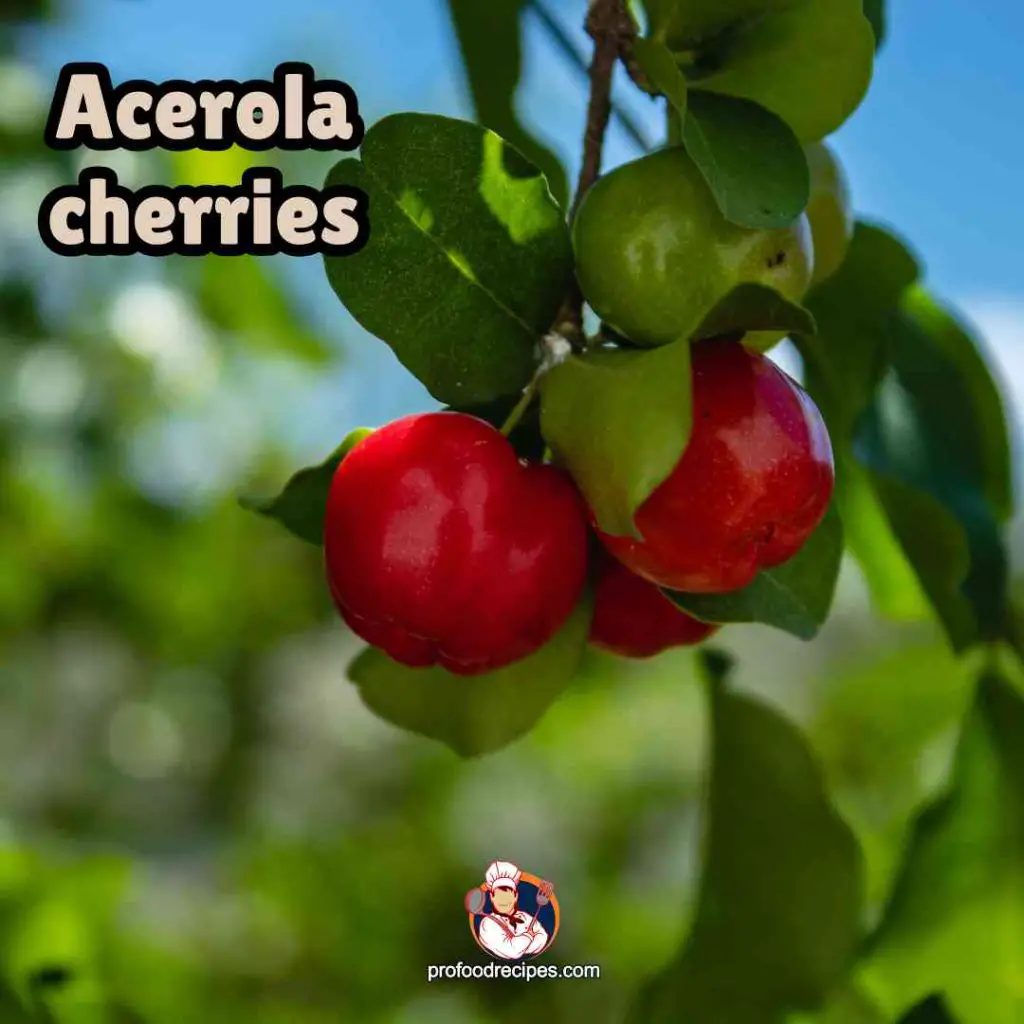
South American popular cherries variety is Acerola cherries. They have a tart-sweet taste and a juicy, pulpy texture. People often use them because they have a lot of vitamin C in drinks, jams, and supplements.
| Peak season | The late spring and early summer months |
| Popular pairing | Paired with yogurt or blended into smoothies |
| Interesting Fact | Known by various other names, including Barbados cherry and West Indian cherry |
| Health results | Boost immunity |
| Nutrition Facts (Per 100 gm) | 33 calories and 1677 mg vitamin C |
22. Ashwagandha
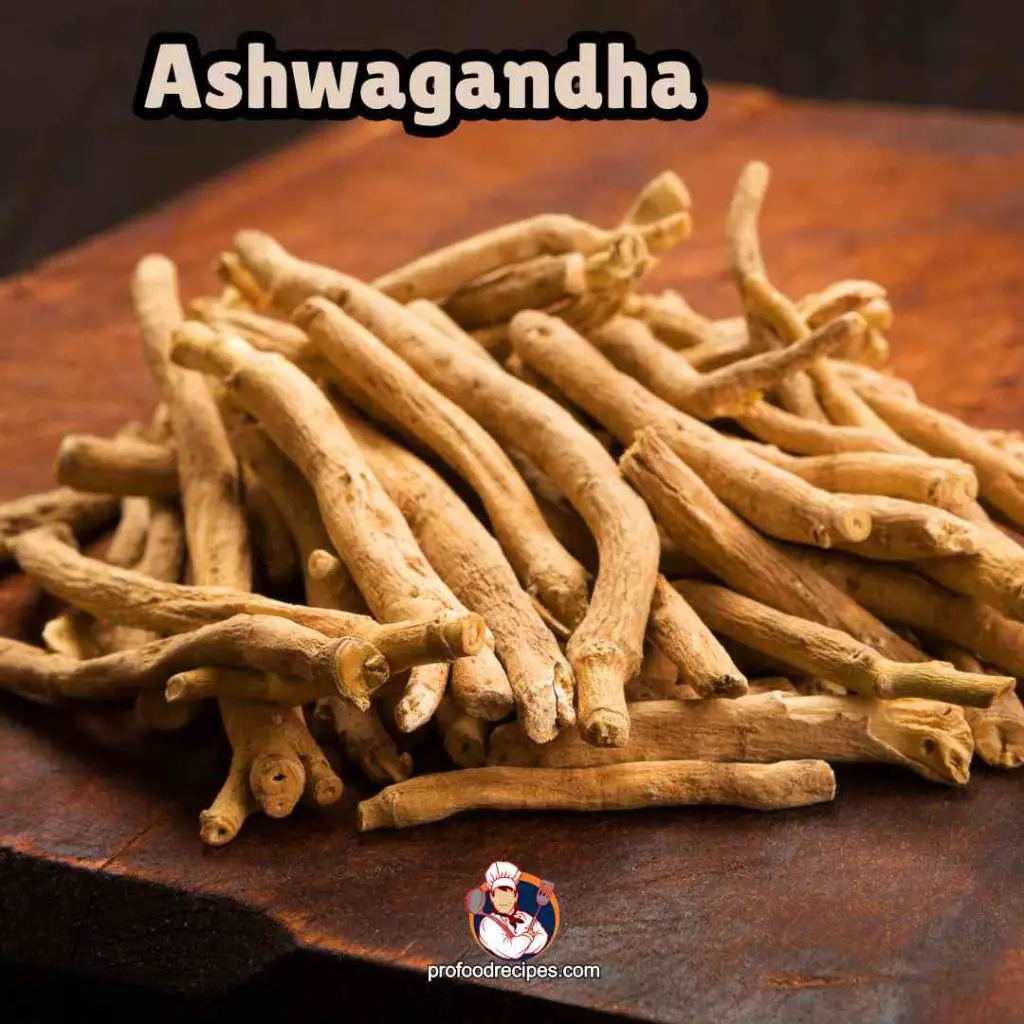
Ashwagandha is originally from India and Africa. It has a bitter, earthy taste. And the texture is powdery and coarse. Its distinguished properties make it an incredible ingredient of Ayurveda medicine.
| Peak season | Throughout the year |
| Popular pairing | Rather than being combined with foods, it is ideally taken as an additive in the form of capsules or powder. |
| Interesting Fact | referred to as Indian ginseng. The herb has been applied for ages in traditional Ayurvedic practices. |
| Health results | Improve brain function, lessen stress and inflammation, |
| Nutrition Facts (Per 100gm) | 245 Kcal and 49.9 gm carbohydrates |
23. Atemoya
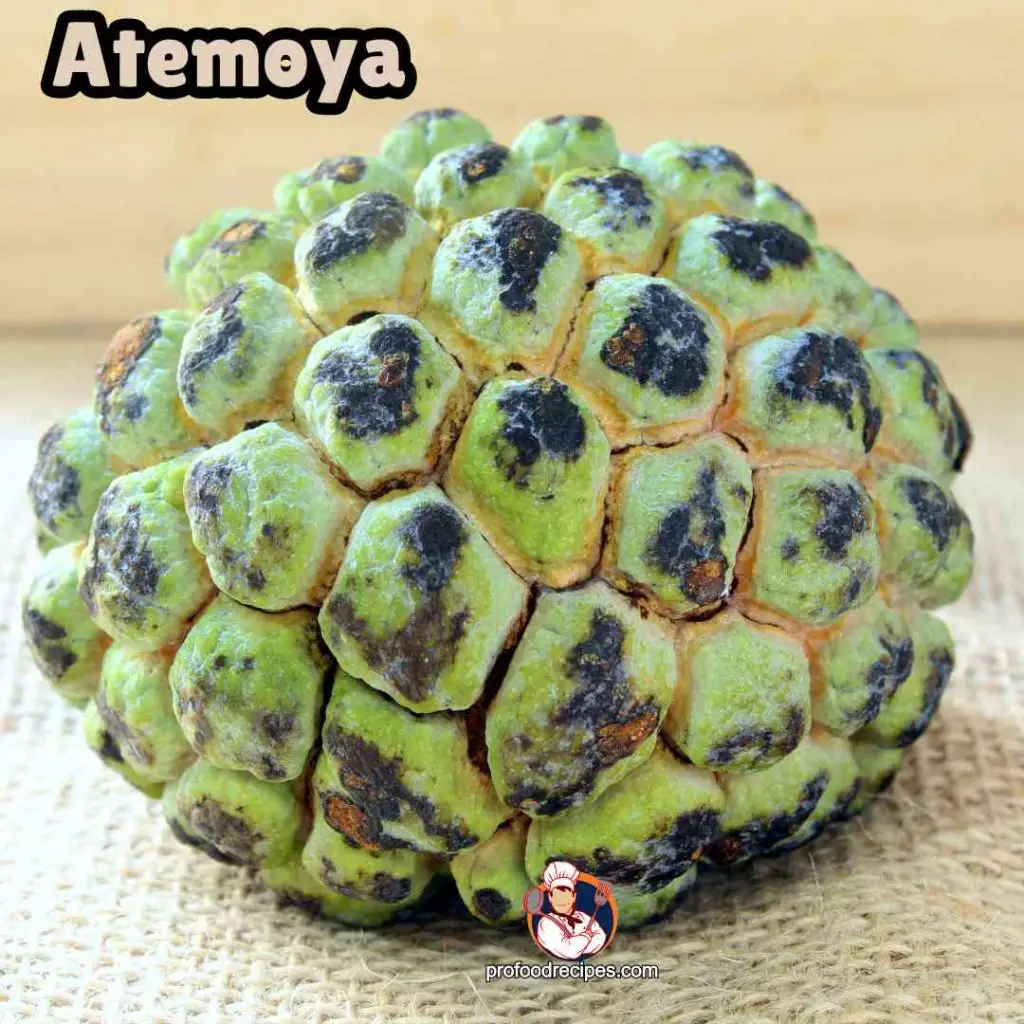
The exotic Atemoya fruit is a hybrid of cherimoya and sweet apple. It boasts a sweet and creamy taste, complemented by its soft and slightly grainy texture. People savor it fresh and in various dessert creations.
| Peak season | summertime, which spans from June through August |
| Popular pairing | Used in fruit salads and desserts. |
| Interesting Fact | Atemoya is a delightful hybrid fruit, blending the qualities of sugar apple and cherimoya into a unique and tasty combination |
| Health results | Potentially assist in lowering cholesterol. |
| Nutrition Facts (Per 100gm) | 94 calories and 24 g carbohydrate |
24. Annona
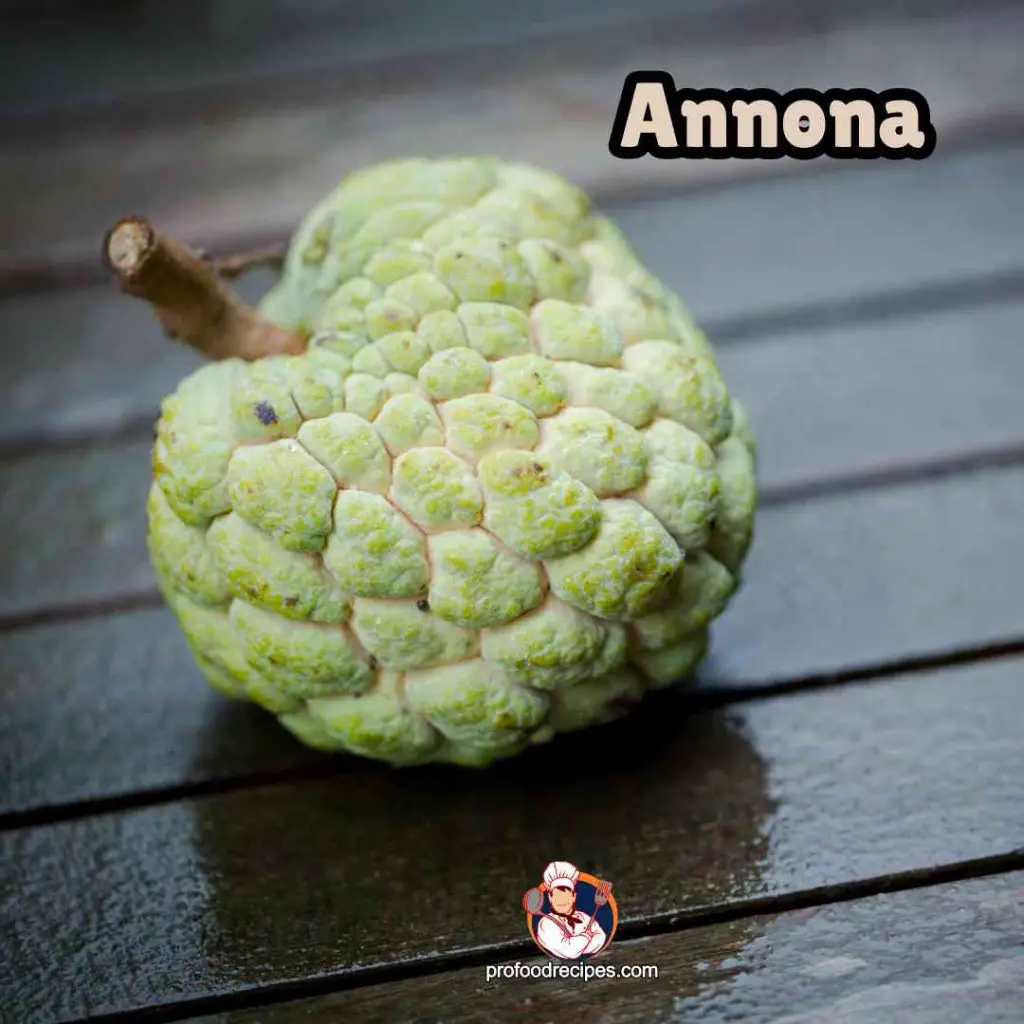
Annona grows in tropical areas. It comprises a sweet and custard-like taste. Moreover, it is creamy and soft in texture. For these features, they are brilliant options for making desserts and drinks.
| Peak season | From May to August, late spring to the summer months |
| Popular pairing | Used in fruit salads, smoothies, and desserts |
| Interesting Fact | Sometimes called “custard apples” because of their creamy and custard-like flesh. |
| Health results | Support digestive health, essential to cancer treatment and overall well-being. |
| Nutrition Facts (Per 200gm) | 115 calories and 61 mg vitamin C |
25. Arava Melon
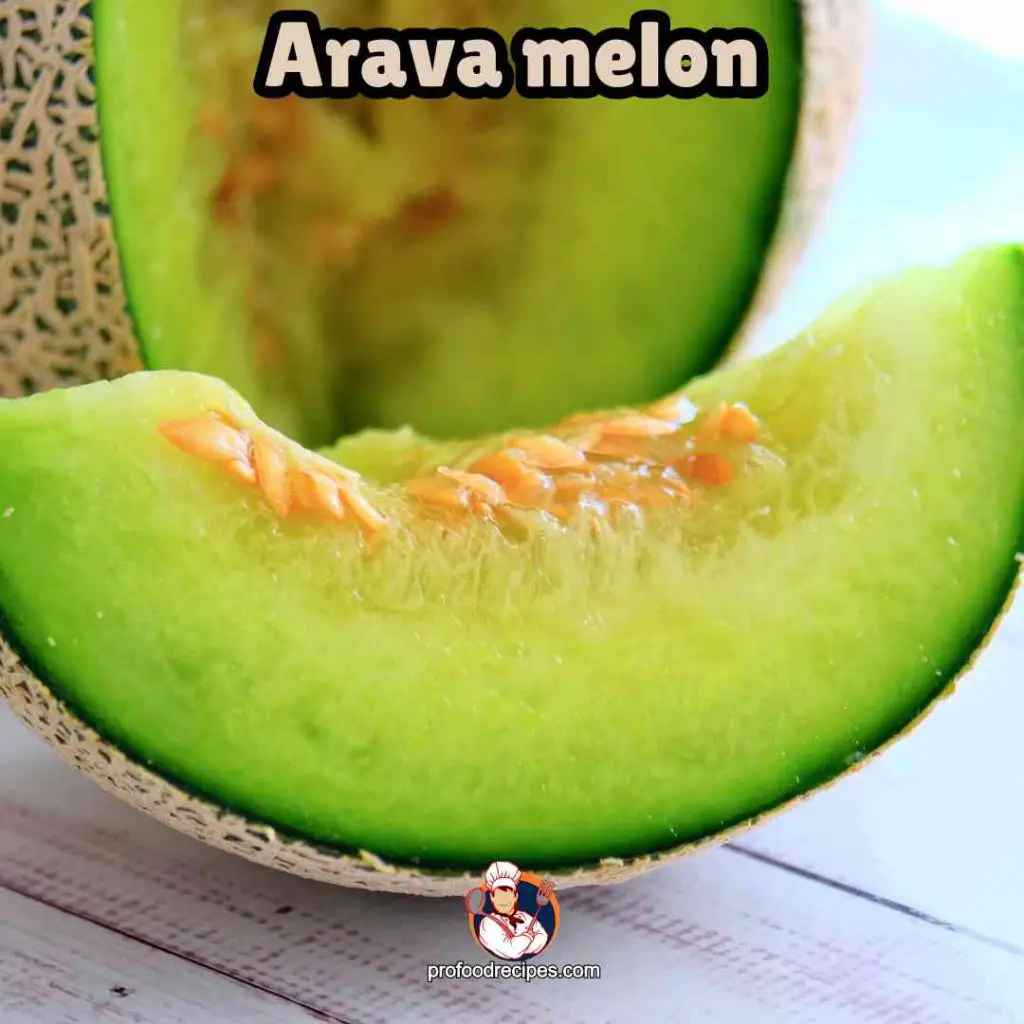
The Arava melon comes from the Arava region in Israel. It has a sweet and juicy taste and feels crisp and refreshing. People often eat it fresh and use it in salads and desserts.
| Peak season | The summer months, from June to August. |
| Popular pairing | Used to create refreshing fruit salads |
| Interesting Fact | Known for their exceptionally sweet and juicy flesh |
| Health results | Balance body fluid level and strengthen immune |
| Nutrition Facts (Per 160 gm) | 46 calories and 23 mg vitamin C |
FAQs
What Are the 5 Longest Fruit Names Beginning With A?
Here are the five longest fruit names that begin with the letter A ranked by the number of letters in their names:
· Avocado (7 letters)
· Acerola (7 letters)
· Apricot (7 letters)
· Ananas (6 letters) – Another name for pineapple.
· Açaí (5 letters)
What is a Berry That Starts With an A?
A berry that starts with the letter A is the acai berry. Acai berries are small and dark purple fruits. They are Amazon jungle natives. They are well-known for their high antioxidant content. It can be a brilliant option to make smoothie bowls and healthy foods.
What is a Green Fruit That Starts With an A?
Avocado is a green fruit that begins with A. It’s pear-shaped, usually with a dark-green bumpy skin, although some varieties have a smooth, shiny, bright green exterior. While we treat avocados as vegetables in cooking, they are technically considered large berries from a botanical standpoint.
What is a Yellow Fruit That Starts With an A?
A yellow fruit that begins with the letter A is the abiu, scientifically known as Pouteria caimito. This tropical fruit features a smooth, sturdy yellow skin, varying in shades from pale to vivid. Inside, you’ll find translucent white flesh with a jelly-like consistency and a gentle flavor reminiscent of condensed milk.
Final Verdict
Fruits that start with A present a delightful kaleidoscope of flavors and textures, ranging from the familiar to the exotic. They originate from diverse corners of the globe, finding their way into various culinary traditions and even offering health benefits.
Whether you’re savoring the sweet crunch of an apple or exploring the unique flavors of Amla and annatto, these fruits exemplify the richness and diversity of nature’s bounty. They captivate our taste buds and stimulate culinary innovation through orchard to kitchens.
You May Also Like to Read:
- What is the Best Wood for a Cutting Board?
- 20 Indian Food Presentation Ideas
- 11 Amazing Candy That Begins With Q
- 12 Candy That Starts With an R
- 15 Candies That Start With F






